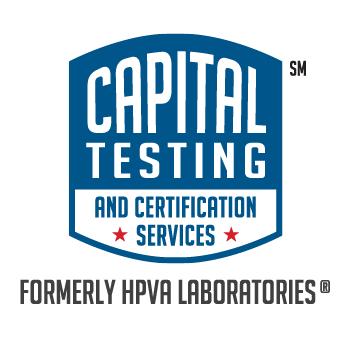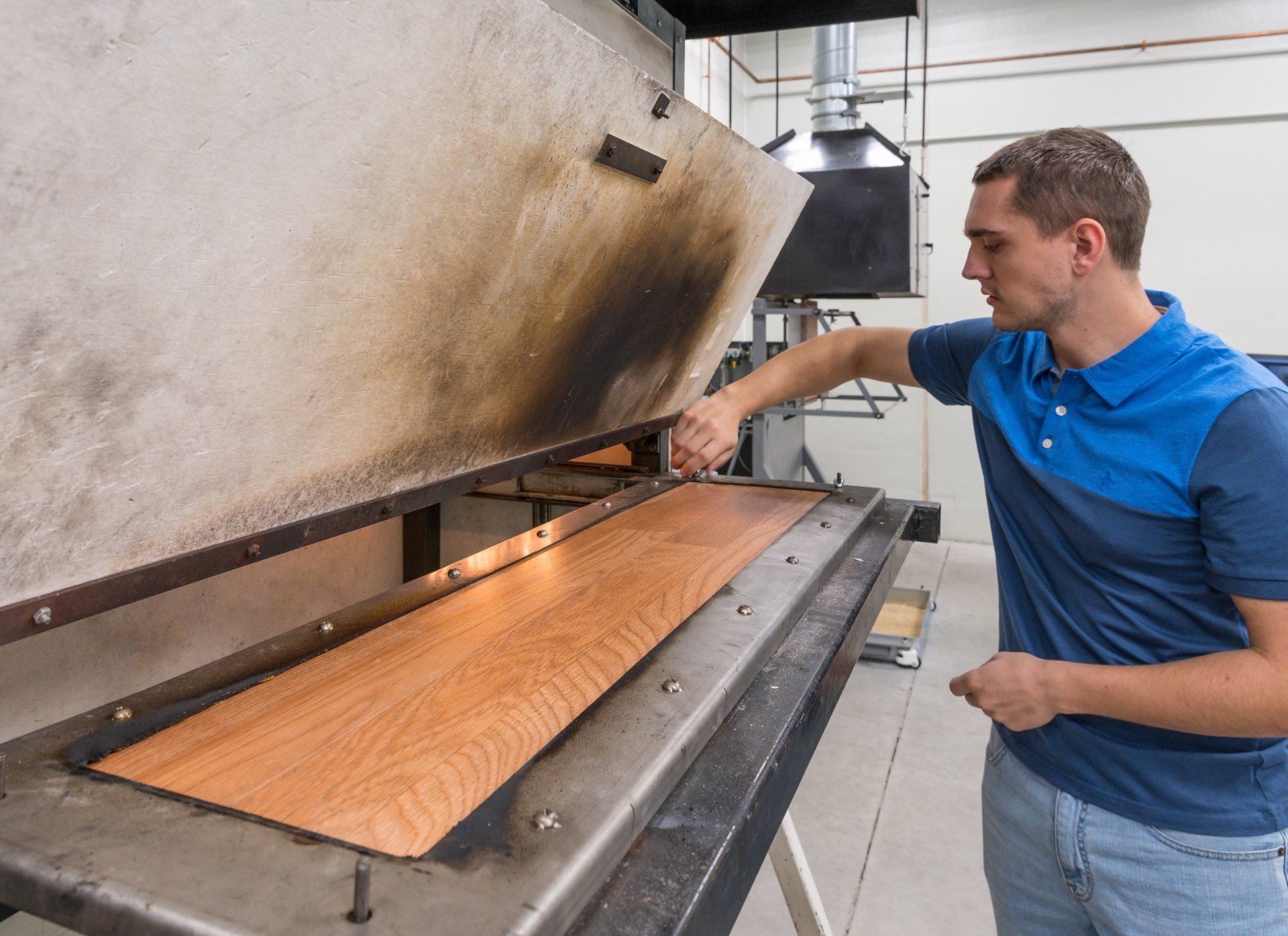ASTM E648 - CRITICAL RADIANT FLUX TESTING For FLOOR COVERING MAterials
REQUEST A QUOTEASTM E648 Critical Radiant Flux Testing
Critical Radiant Flux of Floor-Covering Systems Using a Radiant Heat Energy Source
Which materials need to be tested in accordance with ASTM E648?
How is ASTM E648 testing performed?
Prior to testing, the ASTM E648 test specimens are conditioned in an environment that is held at 21 ± 3 °C (69.8 ± 5.4 °F) and 50 ± 5% relative humidity for a minimum of 48 hours. Carpet specimens that have been glued down are conditioned for a minimum of 96 hours.
The ASTM E648 test chamber is heated for a minimum of 1.5 hours at the beginning of each testing day. After preheating the chamber, a “dummy board” is loaded into the chamber and allowed to preheat for an additional 0.5 hours. The dummy board is used to establish the radiant energy flux distribution that is created by the radiant panel. The panel is adjusted to yield a flux profile with a nominal maximum of 1.1 W/cm2 to a minimum of 0.1 W/cm2. After the flux profile standardization is complete, the dummy board is removed, and the ASTM E648 chamber is allowed to equilibrate.
A minimum of three specimens are tested. For each burn, the test specimen is loaded into a stainless-steel mounting frame and backed with 13 mm thick inorganic millboard. The specimen is then placed onto a horizontal mounting platform and a pilot burner is ignited. The pilot burner is kept at least 50 mm from the sample surface during the first 5 minutes of the test. At this time, the specimen is only being exposed to the radiant heat gradient that is created by the panel. After the initial 5 minutes have elapsed, the pilot burner is lowered so that it is directly impinging on the edge of the specimen that is closest to the radiant panel. The pilot burner is left in contact with the specimen for an additional 5 minutes. When 5 minutes have elapsed, the pilot burner is removed from the specimen surface and extinguished.
The test is ended if the specimen does not propagate flame during the 5-minute exposure to the pilot burner. For specimens that do propagate flame, the test is continued until flame out or until the flame advances to the full length of the specimen. The distance of the flame travel is measured, and that distance is converted to a radiant flux value in W/cm2.
What data will be included in an ASTM E648 report?
- Average Critical Radiant Flux*
- Individual Critical Radiant Flux Values
- Standard Deviation
- Coefficient of Variation
- Maximum Burn Length for Each Specimen
- Time to Flame Out
Interpreting ASTM E648 Results
ASTM E648 testing is conducted to determine the critical radiant flux (CRF) of a floor covering material. The critical radiant flux is the level of incident radiant heat energy on the floor covering system at the most distant point of flame out. Higher critical radiant flux values are desirable because they signify that a material is able to extinguish itself while subject to a high level of radiant heat. The critical radiant flux is reported as W/cm².
The most commonly used classification system can be found in the International Building Code (IBC), NFPA 5000, and NFPA 101.
| Class | Requirement |
|---|---|
| I | CRF ≥ 0.45 W/cm² |
| II | CRF ≥ 0.22 W/cm² |
Other applications may only specify the minimum allowable critical radiant flux. For example, in rail applications, NFPA 130 (Standard for Fixed Guideway Transit and Passenger Rail Systems) and the Federal Railroad Administration’s 49 CFR Part 238 specify a minimum allowable critical radiant flux of 0.5 W/cm2. The US Navy’s MIL-STD-1623 specifies a minimum allowable critical radiant flux of 0.45 W/cm2 for floor covering materials that will be used on naval ships.
ASTM E648 Test Specimen Preparation
ASTM E648 test specimens should be representative of the material or system which the test is intended to examine. All test specimens should be at least 250 mm (9.84 in.) wide and 1050 mm (41.33 in.) in length. Mounting instructions for carpet, resilient flooring, hardwood flooring, and laminate flooring can be found in Annex A2 of the ASTM E648 standard.
Typically, the floor covering material is mounted to an underlying substrate that is representative of the intended real world installation. Common underlying substrates include 1/4" fiber cement board (representative of a concrete install), structural plywood, oriented strand board (OSB), and metal. The flooring material should be adhered to the underlying substrate or mechanically fastened using a method that mimics the standard installation practice. Underlying materials such as padding or building paper should also be included. For floating installations, the material can be loosely laid overtop of the underlying substrate.
Download our sample preparation guide by clicking the button below!
Is Capital Tested an accredited ASTM E648 laboratory?
Capital Testing and Certification Services is ISO/IEC 17025 accredited to conduct ASTM E648 testing. The NFPA equivalent method, NFPA 253, is also covered under Capital Testing's scope of accreditation. Click Here for Capital Testing's full ISO 17025 scope.


